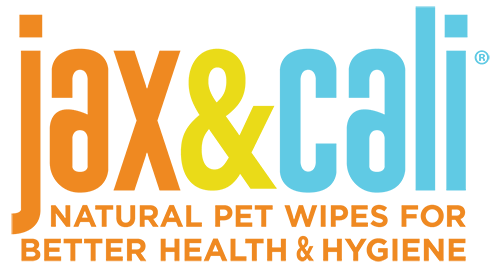Winter Paw Pad Protection
Most dogs are naturally equipped for winter with their fur coats and all-terrain paws. But snowy, icy winters can cause quite a bit of damage to a dog’s paws. Learn more about dog paw pads and how to winterize them!
Why Dogs Need a Paw Balm in Winter
On walks, water can freeze between your dog’s paw pads, creating balls of ice that damage the foot. Further, salts and de-icing chemicals can burn the pads and cause health risks when your dog licks their paws after a walk. Not to mention the cold, snowy ground cover can cause drying and cracking, which can lead to painful lesions that will hinder further walks and quality of life!
Lots of pet parents turn to boots to protect their dog’s paw pads, but plenty of dogs won’t walk in them, bite them off, or lose them.
A Paw Balm with wax is an excellent option for paw pad protection for every dog. Wax creates an invisible boot around your pup’s paws that protects them while allowing perspiration to escape through the pads.
Most paw balms are thick ointments that you scoop out and apply. A more convenient method is a stick form. All you do is roll the balm onto your dog’s paw pads without getting your hands messy.
5 Easy Steps to Winter Dog Paw Pad Protection
- Trim the long hair between the paw pads and around the edges. Long hair collects water that freezes into ice balls or collects salt and de-icing chemicals.
- Trim your dog’s nails regularly. Long nails will cause the paw to tent up. This creates more space between the paw pads where ice can accumulate.
- Apply a thin layer of Paw Balm to each paw before going out for a walk. This creates a barrier that protects sensitive paw pads from winter hazards.
- Wipe their paws after the walk. Use a Paw and Body wipe to remove snow, ice, debris, and chemicals.
- Re-apply the Paw Balm. This will prevent their paws from drying out and cracking.
Must-Have Paw Balm Ingredients for winter Paw Pad Protection
Dog paw balms can be made from different blends of ingredients, including waxes, oils, butters, petroleum, and lanolin. Only use balms intended for use in dogs. Human products may contain ingredients that aren’t safe or effective for dogs. Here are the important natural ingredients that an all-season paw balm should contain:
- Wax (such as beeswax) provides an important protective layer that insulates paws from cold and moisture.
- Coconut oil adds moisture and contains antiviral, antifungal, and antibacterial properties.
- Hemp seed oil strengthens and nourishes the skin and makes it better able to resist infection and irritation. It’s also rich in omega-6 and omega-3 fatty acids, which encourage skin growth and new cell generation.
- Vitamin E is an antioxidant and has moisturizing, soothing, and healing benefits. It helps to strengthen the skin barrier against chemicals, pollution, and UV rays.
- Sunflower oil soothes the skin with its anti-inflammatory properties, strengthens the skin barrier, and hydrates.
- Avocado oil moisturizes the skin, relieves inflammation, reduces redness and inflammation, and helps wounds heal more quickly.
- Shea butter works like an emollient that softens, smooths, moisturizes, and reduces swelling.
- Candelilla wax is a fast-absorbing lubricant that nourishes, hydrates, conditions, and smooths parched, cracked pads.
- Cocoa seed butter hydrates the skin by creating a protective barrier that holds in moisture and prevents skin from drying.
- Sunflower oil contains linoleic acid that protects against bacteria and germs, contains antioxidants, and helps heal wounds.
